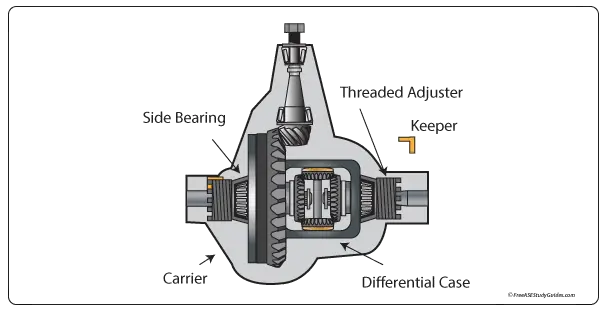Ring and Pinion Tooth Contact Patterns

Apply tooth contact compound to the ring gear in two places. Carefully apply moderate pressure to the outside ring gear. Use something soft, like a small block of wood. Rotate the pinion to turn the ring gear four complete revolutions on the drive side and then four in the opposite direction for the coast side. The following are typical ring gear patterns. Check with the manufacturer's manual for specifications or any special procedures.

This is an ideal ring gear tooth contact pattern. It's centered between the gear's teeth' top and bottom.

This is also an ideal contact pattern. This image shows the coast side of the ring gear.

When the pattern is located toward the heel or outside of the ring gear, there's an excessive backlash. Moving the ring gear toward the pinion removes the backlash and moves the contact pattern closer to the toe.

This is the opposite of C. The ring gear is too far in toward the pinion. Moving the ring gear away from the pinion increases backlash and causes the pattern to move toward the heel of the ring gear.

This pattern indicates excessive pinion depth. When the pinion is too far toward the ring gear, the pattern is low toward the base of the gear teeth. Moving the pinion toward the ring gear causes the pattern to move toward the bottom or root of the gear teeth. Moving the pinion away from the ring gear causes the pattern to move toward the top of the gear's teeth.

This pattern indicates that the pinion is too far from the ring gear. Moving the pinion toward the ring gear causes the pattern to move toward the root of the gear's teeth.